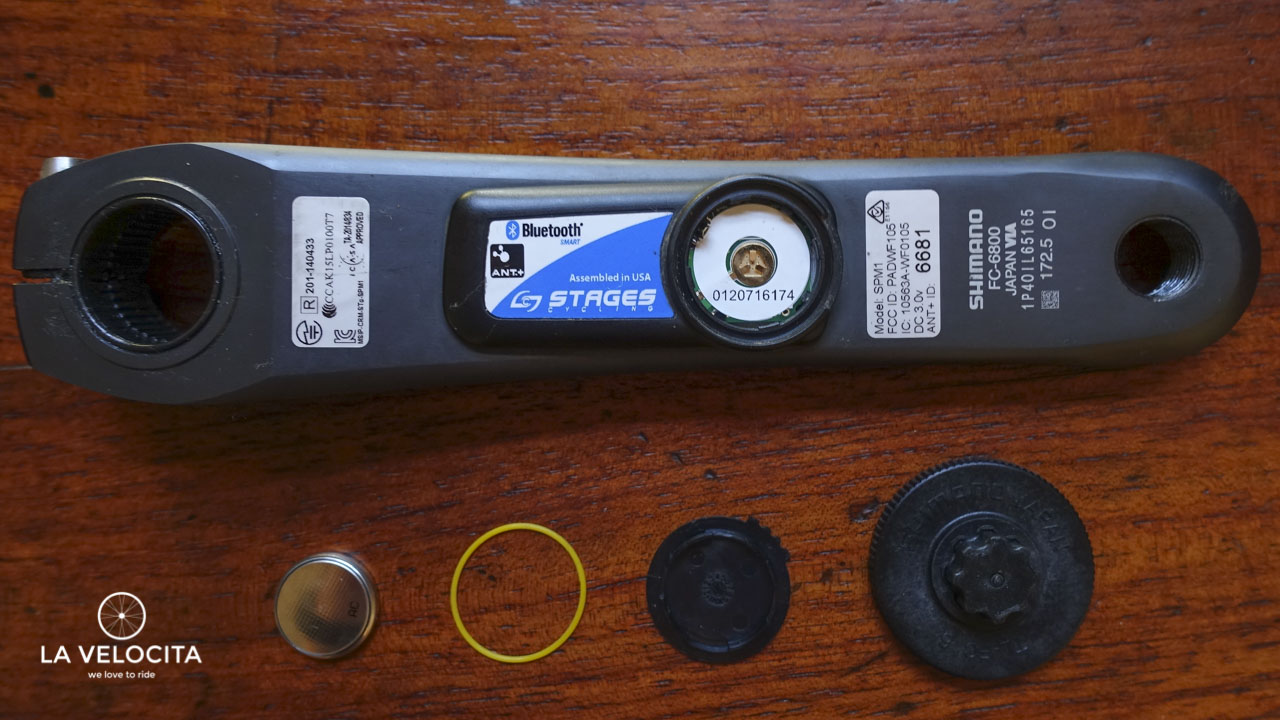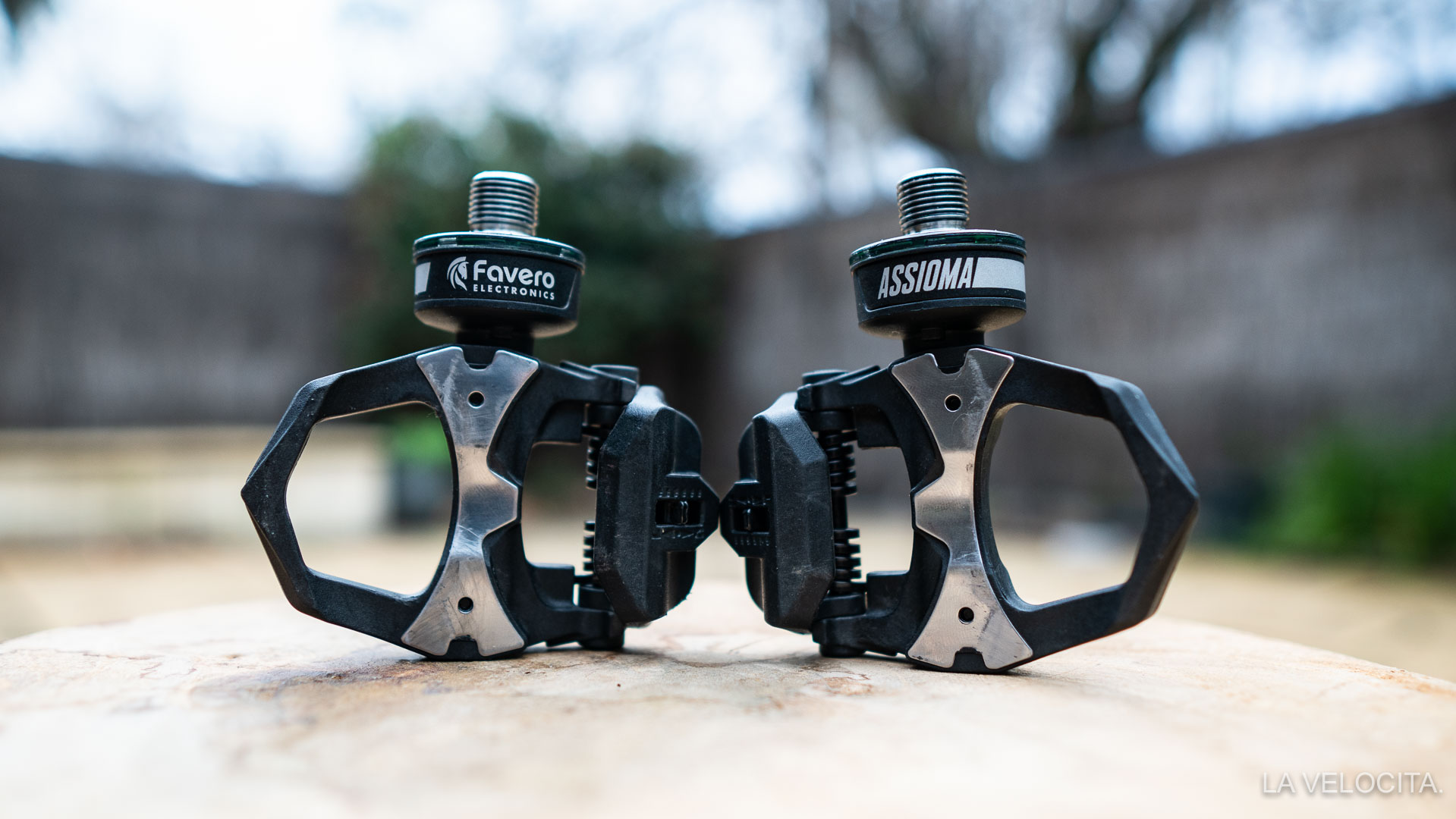Stages Ultegra Power Meter Review - Gen 2

I’ve spent a few months living with a Stages Ultegra 6800 power meter. Is this still the king of accessible power meters?
Words and Images - James Raison
Before I kick off, I’d like to set the tone of this piece. It’s not a DC Rainmaker style review. This is the review for the average punter looking at taking a plunge into the ocean of numbers that a power meter can bring. You might have fists of ham, spacers under your stem, and have no idea what your FTP is. You are the perfect candidate for a Stages power meter.
INSTALLATION
So, I’m going to assume no prior knowledge here and quickly explain that the Stages Power Meter is a strain gauge added to a bog-standard left side crankset. It beams data via bluetooth to whatever device you use to harvest that information - my choice is a Garmin 520. Simple, clean, and easy.
The Power Meter above the coin cell battery, stupid little rubber ring, battery door enclosure, and Shimano crank dustcap removal tool (not included with the power meter)
Getting the power meter on the bike was a cinch and should be within the talents of most people. All I needed was a bread and butter knife to get the crank dust cap off and a 5mm allen key to undo the bolts of the current left crank arm. For people who aren’t morons, invest in a proper Shimano dust cap removal tool. They’re cheap, easy to use, and will save your fancy bread and butter knives. Take your old left crank off and slide this one on and tighten everything up. Simple. Check out this instructional YouTube video if you’re still not confident. After that, drop in your battery, carefully close the door, and re-fit your pedals.
Your fancy new hardware needs some software to function though so whip out that phone and download the Stages Cycling App. Pairing with bluetooth was easy and I was taking care of zero-offsetting in no time. After that, I paired it with my Edge 520 and tumbled down the rabbit hole of power data fields. Good lawd. Clear your weekend for this part.
You aren't short of display options for your power data.
THE RIDE
Riding with the a Stages power meter is unsurprisingly no different to riding without it. It’s just a standard left side crank with a tumour on it. So you won’t notice any difference on the bike.
The key points then are connection reliability, and data consistency.
Connection reliability is very good. I had no problems with connection or data dropping out during any rides. It was always sending data when there was battery life - something I’ll come back to below. It’s a damn good performer when you’re out on the road. I used this thing across the Nullarbor, and have put a pile of kms on it around Adelaide with no issues. Big tick there.
Data consistency is a little more hazy. I never ran another comparison power meter, as a proper pro like DC Rainmaker will, so this is pure feelpinions. Sometimes the data would drop by a lotta watts very suddenly during consistent efforts. It was annoying when trying to follow 3 second power, less annoying with the extra smoothing of 10 second power. It didn’t happen a lot but it happens enough to notice and be miffed. Consistency is pretty damn important for a power meter so these small gripes are hard to let go when you’re chewing stem at threshold. It’s not a deal breaker and not overly common but something that grinds my gears.
THE PROBLEMS
There’s no escaping that Stages has a reputation for unreliability, particularly in Gen 1. I didn’t have a clear run with this either.
Most of my problems start, and finish, with the design of the battery enclosure. It’s a tiny little rubber ring and a small door that rotates a few degrees and closes over the top tasked with world-proofing the device. I was skeptical of how it could possibly keep water out, and my experience is that it doesn’t always. After some sodden riding, the battery life kept getting shorter and shorter until eventually a new battery would go in and 3 days later it would be flat. Moisture had penetrated the unit and was shorting the battery. My solution was to take the battery out and leave the cover off between rides which led me to despise the tiny rubber ring and enclosure system. It’s infuriatingly fiddly. Weeks spent drying out did eventually return the unit to normal and now I have no battery life problems. How long until some decent rain causes it again?
My next gripe is with the software. It only ever displays battery life as full. So I could only tell the battery was flat by losing power data. Very annoying if you’re trying to do structured power training and it conks out.
The Stages app is very friendly to use.
Stupid battery icon of lies!
SHOULD YOU BUY A POWER METER?
Power meters are pointless if you’re not planning to use it properly. It’s the ultimate training tool. A measurement you can’t hide from. Your power meter doesn’t care about headwinds or how you feel on the day. There are only watts.
Personally I love having a power meter because I’m a massive nerd and someone who likes more structured training. I wrote an article early on with my initial thoughts on the value of a power meter and those haven’t changed. Before you buy any power meter you must have a clear idea of why you want it. Do you have a target event? Are you wanting more structured training? Do you really need another measurement tool?
IS STAGES FOR YOU?
The Stages Gen 2 Power Meter is easily installed and easy to live with. The data beams almost without issue most of the time. I have lost some faith in the design of the battery enclosure though. It’s already failed to keep moisture out once. Plus I curse it every time I need to change battery - which has been a ton of times in under a year thanks to the battery drain issues.
The Stages Gen 2 is still a good option for people wanting to spend some time in the wattage cottage. A flood of challengers to the Stages throne makes this decision harder than it was 18 months ago. 4iiii, Zwatt, and Pioneer all have their left-crank challengers. Despite my mixed experience with Stages, I’d still recommend people give them a go. At the very least, I hear very good things about their warranty processes.
Here’s some extra credit resources:









